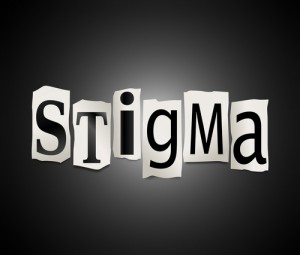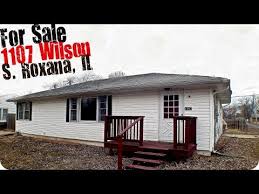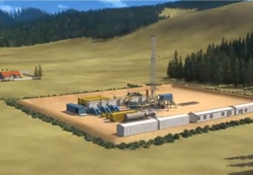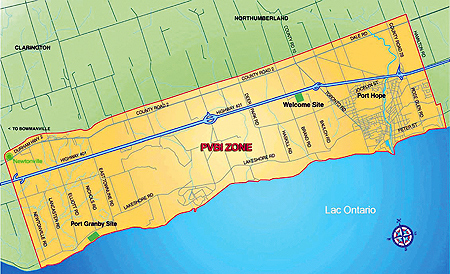The Challenge of Addressing Environmental Stigma Claims
By admin on September 23, 2014
Leave a comment
The often uncertain nature of environmental stigma claims has resulted in diverse and often confusing jurisprudence. Stigma damage claims seek recovery of damages to the reputation of the realty. Stigma damages represent the market’s perception of the decrease in property value caused by an injury to the property.
In the typical diminution of property value claim, the general rule is that a property owner may seek recovery of diminution of property value or the cost of remediation, but not both. However, in certain circumstances, claimants contend, there is an “additional” diminution of value due to a public health concern about the subject property or contamination on adjacent property for which recovery is sought. This is the subset of diminution of property value claims where claimants argue that damages should be awarded on account of stigma.
 Stigma claims raise conundrums for the courts. On the one hand, courts desire to make a distressed plaintiff whole. On the other hand, courts want to award only those damages that are proven with reasonable certainty. Industry groups argue that stigma damages should not be permitted because they subject industry to the whim of any landowner able to obtain speculative testimony about the future economic impact of a temporary condition – even a condition that a regulatory agency considers satisfactorily addressed. These arguments take on even greater poignancy where the claimant’s property has not been physically impacted and the purported stigma is claimed to derive from mere proximity to a contaminated parcel.
Stigma claims raise conundrums for the courts. On the one hand, courts desire to make a distressed plaintiff whole. On the other hand, courts want to award only those damages that are proven with reasonable certainty. Industry groups argue that stigma damages should not be permitted because they subject industry to the whim of any landowner able to obtain speculative testimony about the future economic impact of a temporary condition – even a condition that a regulatory agency considers satisfactorily addressed. These arguments take on even greater poignancy where the claimant’s property has not been physically impacted and the purported stigma is claimed to derive from mere proximity to a contaminated parcel.
On August 22, 2014, the Texas Supreme Court issued a thoughtful decision examining a number of these issues in Houston Unlimited, Inc.Metal Processing v. Mel Acres Ranch (No. 13-0084). The court performed a painstaking analysis of the opinions of the claimant’s diminution of property value expert, and rejected her methodology and conclusions across the board. As a result of finding the evidence supporting the property diminution claim insufficient, the court declined to take up the stigma issue. Nevertheless, its discussion of stigma claim jurisprudence is noteworthy.
The Texas Supreme Court observed that American courts and commentators struggle with the issue of whether and when to allow recovery for stigma damages. Most jurisdictions agree that plaintiffs must experience some physical injury to their property before they may recover stigma damages. Although courts are divided on whether the injury must be shown to be permanent, defendants have expressed concern that a landowner should not be compensated when the loss is based primarily on public perceptions, which can change over time.
Equally problematic are cases in which the plaintiff’s property has not been contaminated or even threatened with contamination. Some courts have awarded stigma damages to property owners who could demonstrate that their proximity to a landfill where hazardous wastes were dumped, for example, resulted in a loss of their home’s property value. There is concern among commercial landowners that the possibility of property owners collecting damages in the absence of any direct physical impact to their homes could increase the number of claimants in mass tort property damage suits.
In reversing the Court of Appeals, the Texas Supreme Court observed that the struggle over whether to even allow recovery of stigma damages arises primarily from the conflicting goals of fully compensating the plaintiff for an injury while only awarding those damages that can be proven with a reasonable certainty. The court observed that even when it is legally possible to recover stigma damages, it is often legally impossible to prove them. This is because evidence based on conjecture, guess, or speculation is inadequate to prove stigma damages, not only as to the amount of the loss of value, but also as to the portion of the loss caused by the defendant’s conduct.
Based upon the rigor to which the high court subjected the claimant’s diminution of property value claims, Texas trial courts now are on notice that any diminution of property value, whether or not stigma is alleged, must be supported by strong evidentiary proof and reliable expert testimony.

 When a homeowner brings a multi-count toxic tort case alleging that a corporate defendant’s discharge of toxic substances from its facility contaminated his property, the diminution of property value claim is often the only element of damages subject to objective determination. Or is it?
When a homeowner brings a multi-count toxic tort case alleging that a corporate defendant’s discharge of toxic substances from its facility contaminated his property, the diminution of property value claim is often the only element of damages subject to objective determination. Or is it? as well. Because plaintiffs admitted that they knew the groundwater under their properties was contaminated with TCE when they bought their homes, remediating the property to “if clean” levels would improve the property beyond what plaintiffs purchased and give them a windfall. According to the court, the proper valuation analysis should take into account what plaintiffs knew of the condition of the property at the time of purchase.
as well. Because plaintiffs admitted that they knew the groundwater under their properties was contaminated with TCE when they bought their homes, remediating the property to “if clean” levels would improve the property beyond what plaintiffs purchased and give them a windfall. According to the court, the proper valuation analysis should take into account what plaintiffs knew of the condition of the property at the time of purchase. In examining the “interviews/surveys” approach, the court questioned why McHale doubled the discount from 20% to 40% without explaining why the realtors would not have taken into consideration the other factors McHale discussed when giving their responses. Presumably, the discounted selling price already took into consideration any difficulty in obtaining financing and any increased marketing costs. Therefore, these considerations should not be counted twice in coming up with a discount.
In examining the “interviews/surveys” approach, the court questioned why McHale doubled the discount from 20% to 40% without explaining why the realtors would not have taken into consideration the other factors McHale discussed when giving their responses. Presumably, the discounted selling price already took into consideration any difficulty in obtaining financing and any increased marketing costs. Therefore, these considerations should not be counted twice in coming up with a discount. practical result of raising the bar for class certification and leveling the playing field for corporate defendants. Until recently, however, it was unclear what impact this anti-trust decision would have on toxic tort litigation.
practical result of raising the bar for class certification and leveling the playing field for corporate defendants. Until recently, however, it was unclear what impact this anti-trust decision would have on toxic tort litigation.  The Court held that "mere assertion by class counsel that common issues predominate is not enough. That would be too facile. Certification would be virtually automatic. And so Rule 23 does not set forth a mere pleading standard….Rather, when factual disputes bear on issues vital to certification (that is, to whether the suit should be allowed to be litigated as a class action), such as predominance, the court must receive evidence . . . and resolve the disputes before deciding whether to certify the case." (emphasis added) In reviewing the record below, the court stated that it was not even clear that plaintiffs "have identified a common issue."
The Court held that "mere assertion by class counsel that common issues predominate is not enough. That would be too facile. Certification would be virtually automatic. And so Rule 23 does not set forth a mere pleading standard….Rather, when factual disputes bear on issues vital to certification (that is, to whether the suit should be allowed to be litigated as a class action), such as predominance, the court must receive evidence . . . and resolve the disputes before deciding whether to certify the case." (emphasis added) In reviewing the record below, the court stated that it was not even clear that plaintiffs "have identified a common issue." On February 11, 2013, the IADC conducted a lively, interactive panel discussing the risks and benefits of shale oil and gas extraction at the
On February 11, 2013, the IADC conducted a lively, interactive panel discussing the risks and benefits of shale oil and gas extraction at the 
 We have written in the past concerning
We have written in the past concerning  As a result of the PVP, real estate within the Port Hope Area Initiative has remained remarkably stable. There was no panic selling by homeowners rushing to get out the door before property values fell precipitously. During the first ten years of the program, some 83 claims were filed, resulting in payments of approximately $2,500,000. Given that some 5,800 properties could potentially be affected by the projects, the Program appears to have been very successful at reasonable cost
As a result of the PVP, real estate within the Port Hope Area Initiative has remained remarkably stable. There was no panic selling by homeowners rushing to get out the door before property values fell precipitously. During the first ten years of the program, some 83 claims were filed, resulting in payments of approximately $2,500,000. Given that some 5,800 properties could potentially be affected by the projects, the Program appears to have been very successful at reasonable cost People living near manufacturing plants increasingly seek judicial solutions to environmental issues. In the wake of an environmental incident (such as a release of contaminants into the air or groundwater), fear and suspicion hinder constructive dialog and problem solving by manufacturers and their communities. Environmental issues, as much as any other corporate concern, tend to have a ripple effect, often causing repercussions with far-reaching impact on company business. An accidental release may result in adverse public relations, worker safety disputes, boycott of company products in the market place, adverse regulatory consequences and bad feeling in the community. How a company responds to media attention at the outset has an important effect on how the community, including elected officials, health authorities, regulatory agencies and prospective jurors, react to the issues presented. Accordingly, a company must plan in advance how it will respond to an environmental crisis and what steps it will take to minimize the fallout from such a crisis.
People living near manufacturing plants increasingly seek judicial solutions to environmental issues. In the wake of an environmental incident (such as a release of contaminants into the air or groundwater), fear and suspicion hinder constructive dialog and problem solving by manufacturers and their communities. Environmental issues, as much as any other corporate concern, tend to have a ripple effect, often causing repercussions with far-reaching impact on company business. An accidental release may result in adverse public relations, worker safety disputes, boycott of company products in the market place, adverse regulatory consequences and bad feeling in the community. How a company responds to media attention at the outset has an important effect on how the community, including elected officials, health authorities, regulatory agencies and prospective jurors, react to the issues presented. Accordingly, a company must plan in advance how it will respond to an environmental crisis and what steps it will take to minimize the fallout from such a crisis.